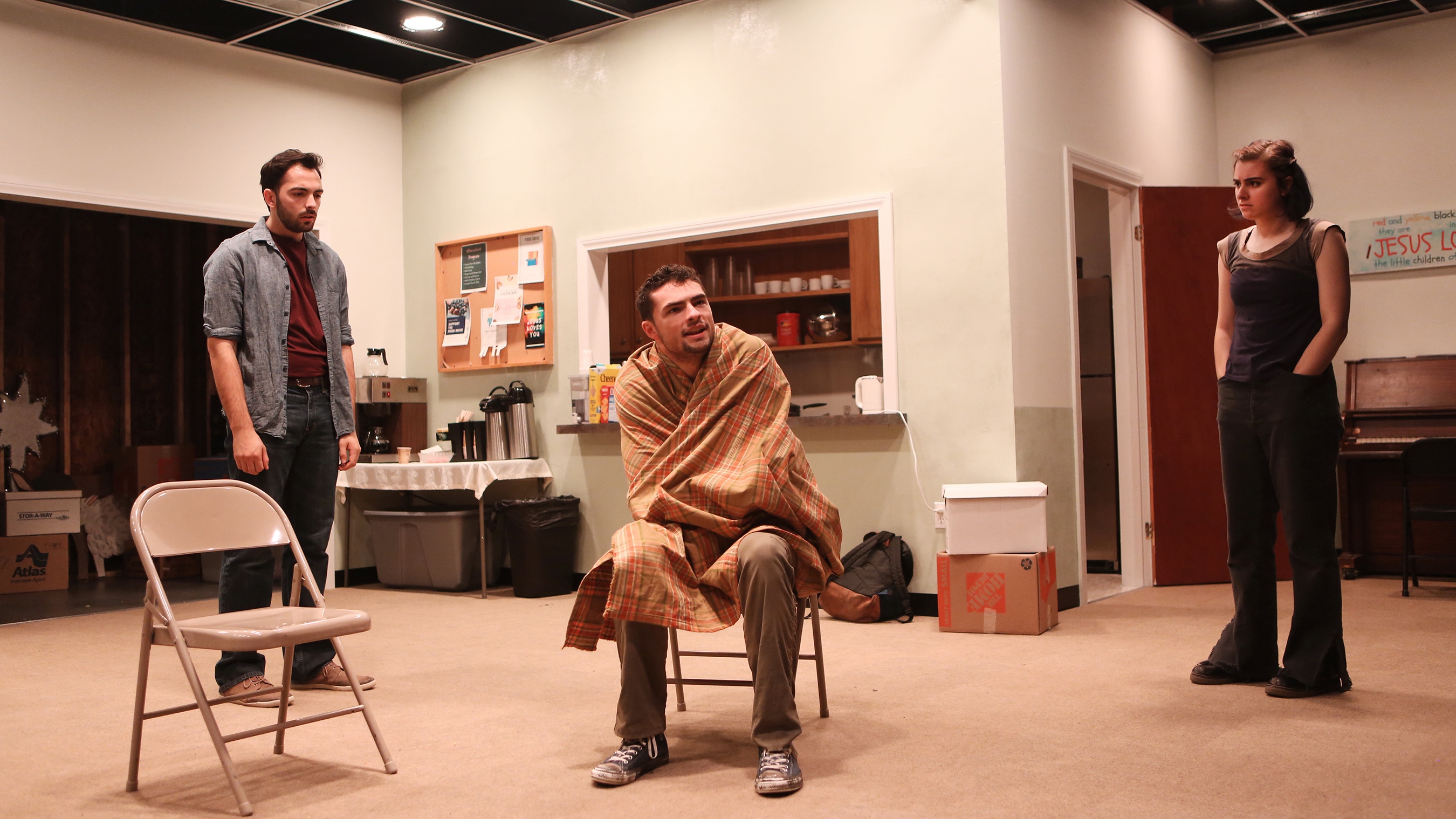
Photo by Sue Kessler.
By Esther Hibbs
The Harvest is an intimate and unexpectedly gripping show that addresses the unique and heart-wrenching challenges posed when we are faced with tension between our self-identities and structural ones. The specific case study that playwright Samuel D. Hunter uses is Evangelical Christianity, in the form of a group of young adult missionaries who are about to leave to an unnamed Middle Eastern destination. Their intentions are challenged upon the arrival of a rejected church member: the rehabilitated addict sister of a member of the mission team who questions their truths. Through production elements such as lighting, sound, and scenic design, the audience is immediately thrust into a world that feels eerily familiar, regardless of an individual’s religious background. In this space that should feel safe, but somehow is not, viewers are captivated by the sheer humanity of each character. They make the plot of the story feel real, as if we are sitting in on a slice of a community’s lives rather than examining a curated work through critic’s eyes. Together, these elements created an effective portrayal of human struggle and brought common light and relationship to a community often either idolized or vilified, depending on who you ask.
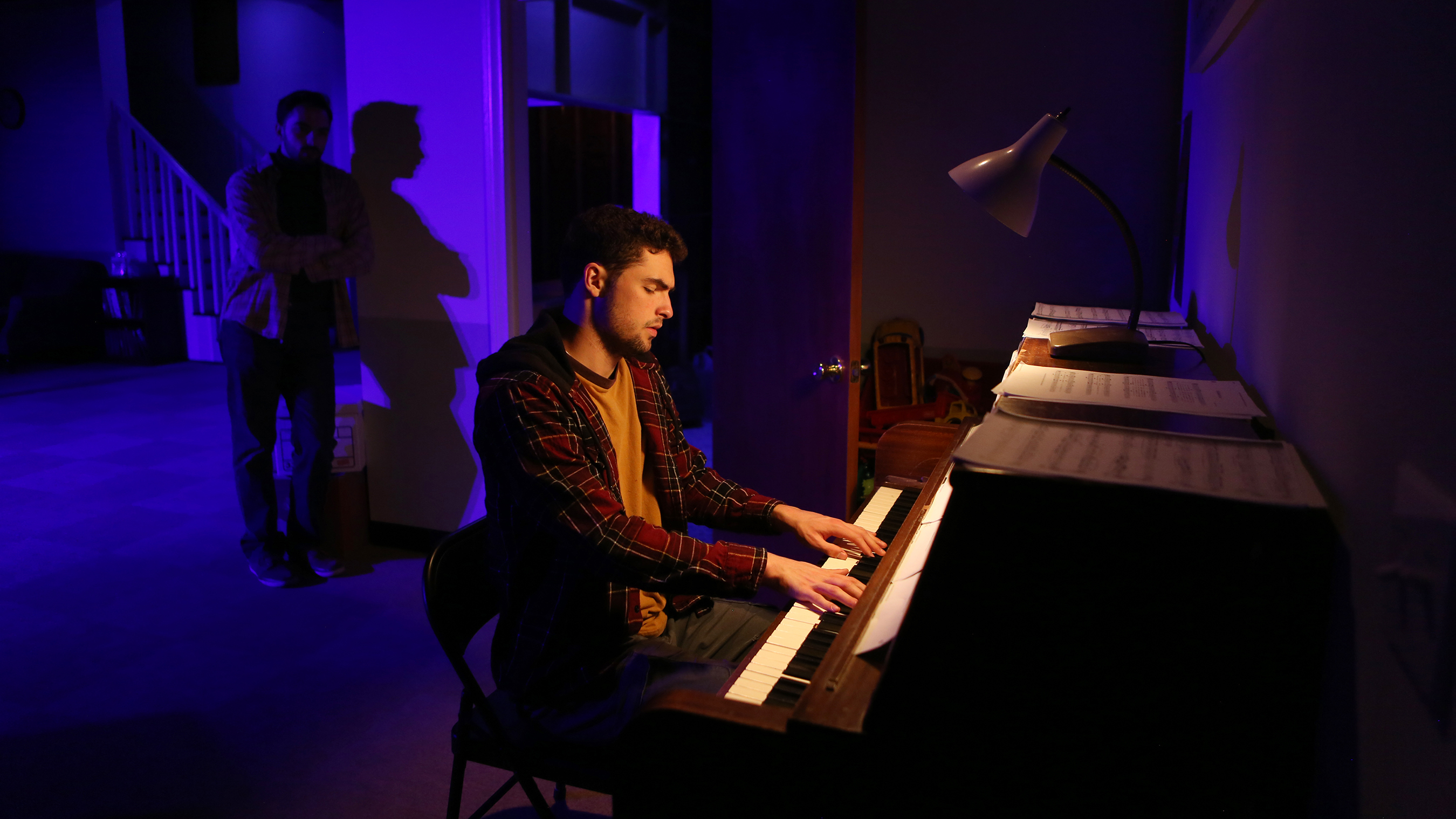
Photo by Sue Kessler.
The Skidmore Theater Black Box space has never felt more confusing than in The Harvest. It is at once small and large, making us feel almost claustrophobic in a basement, but simultaneously conscious of the possibility that there is an entire church up in the rafters somewhere. Walking in, I did not know what to do with this space. Scenic Designer Garett Wilson clearly took care to ensure that the space looked lived-in, lounged-in, and cozy to some, while maintaining the clear in-group/out-group dynamics that a church often holds. The space was not created to be sacred, but it so effectively created the cultural context of a church basement that I wondered how real the space felt to those who spent their days in it; did the actors and crew feel the space had become a home? The Black Box, dressed up in clothes that made it at once comfortable and disturbing, was so genuine that it became the perfect environment for a play that questions the role of surroundings and structure in creating identity.
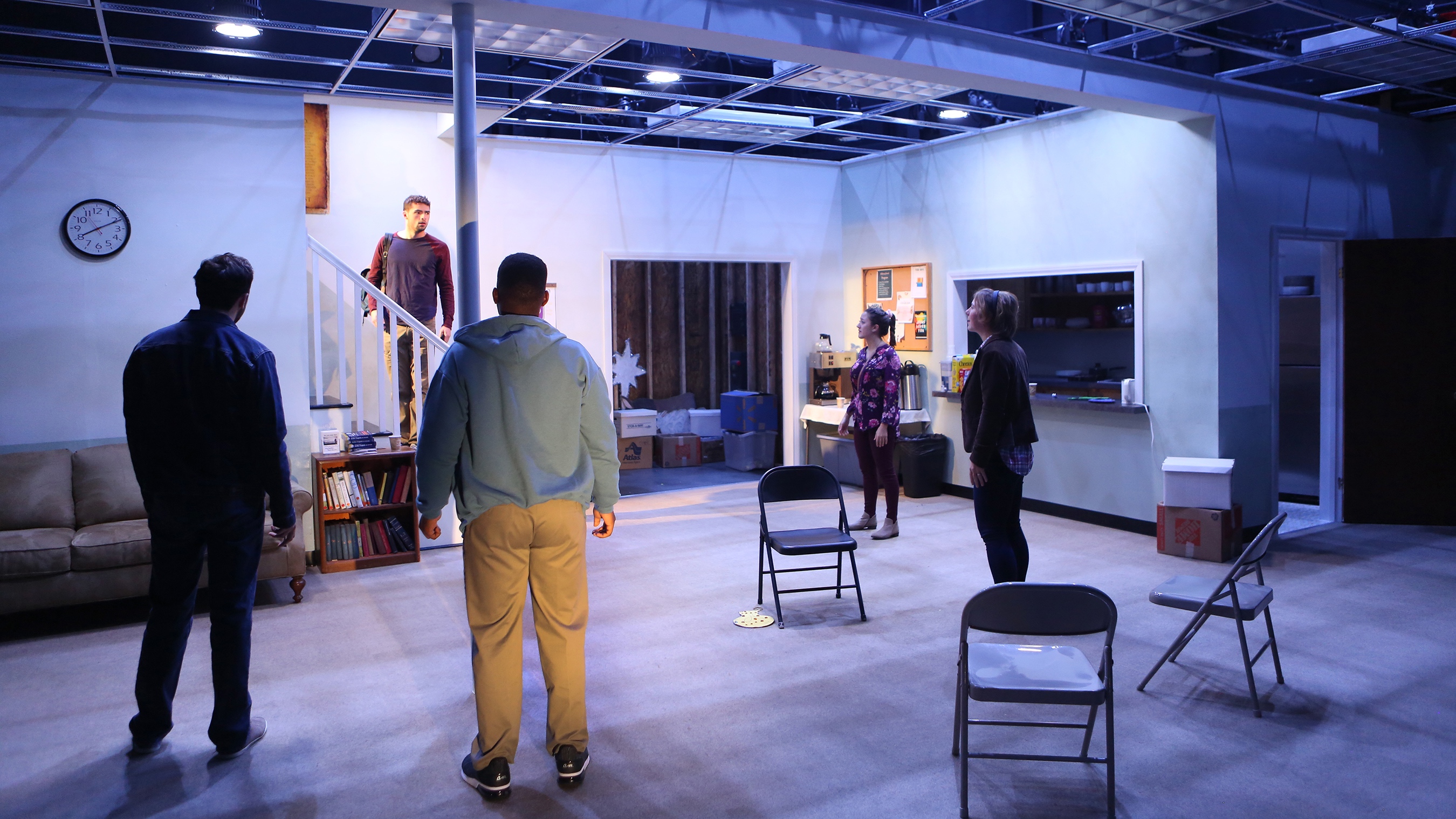
Photo by Sue Kessler.
This space also represents the reciprocal nature of theater production. As much as the space was created for the actors to embody their characters, the characters breathed life and emotion into the basement. Each character was layered, with palpable fear, ignorance, wisdom, and an inquisitive nature that made the play accessible. From Josh (Spencer Evett ’21) and Ada (Juli Moreira ’23) who wanted him to check her boxes, to his sister Michaela (Liliana Mastroianni ’22) who wanted him to create his own boxes, from Denise (Audrey Erickson ’20) and Marcus (Julian Tushabe ’22) who were chasing a perceived ideal they did not have the tools to reach, to Chuck (Nick Leonard ’20) and Tom (Caoilin O’Connor ’20) who performed their societal roles more intensely as the roles grew further from their truths, each dynamic was powerful. There were moments where I hated almost every character, and moments where I wanted nothing more than to reach out to see if they were really okay. Although I was not in the play, the intimacy of the space allowed me to feel attached to the characters and see each of them as a layered being, rather than seeking for a protagonist to latch onto and an antagonist to hate.
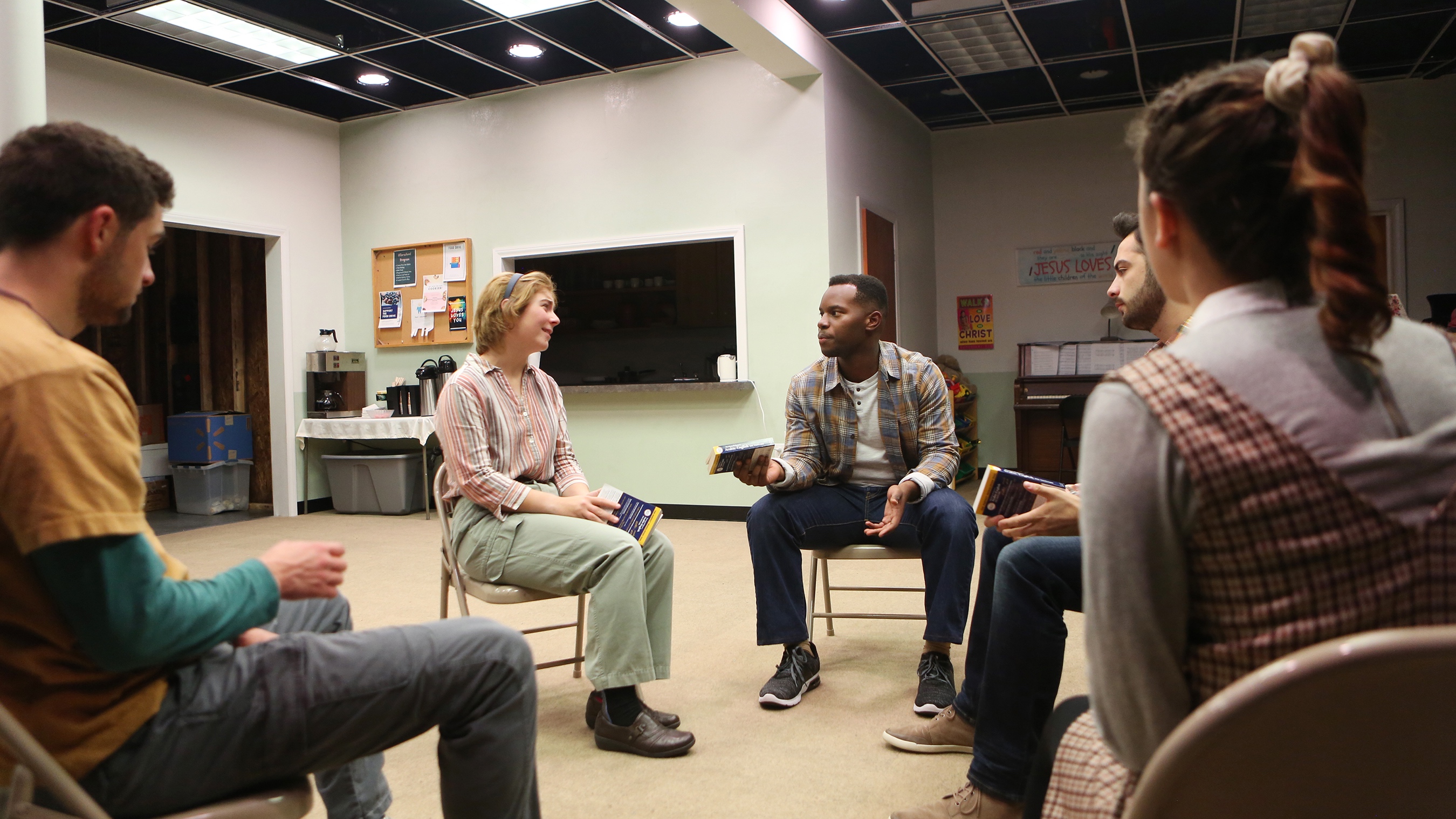
Photo by Sue Kessler.
The Harvest includes a variety of themes, including the concept of religion as a social structure. Each character leaned into or pushed themselves away from religion to illustrate their identity, but it was rare that characters developed an identity in their own right. Throughout the production, the play raised questions about what this means. Between the characters, just about a million stereotypes of Evangelical Christianity were represented. As well as exploring the humanitarian aspect of their mission and the bonds that their faith provides, the characters contend with the misogyny, homophobia, and Islamophobia that the framework of their church enables and exacerbates.
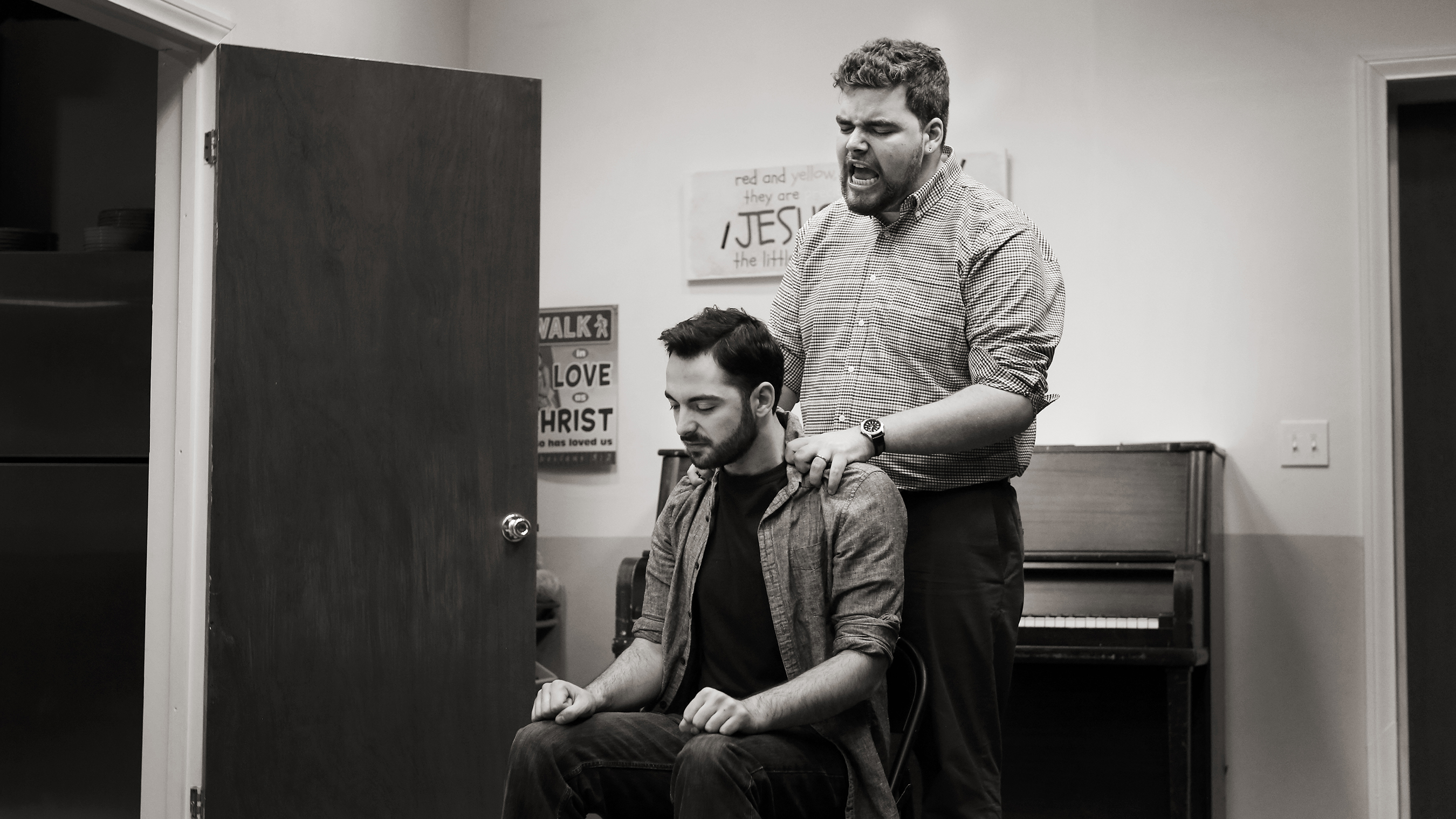
Photo by Sue Kessler.
One of the themes that the piece continually cycled back to was fear, whether expressed overtly or implicitly. Throughout the play, characters exist in a cycle of being scared, seeking a structure to lean on in their fear, and then either being rejected from the structure (thus thrust back into fear) when they ask questions, or performing the needs the structure asks of them. Each character represented different positions on this cycle. When Michaela, who has been rejected from the church, arrives, she inherently forces Josh to question the structure around him. Ada relies on the institution and places her faith in something to rely on, rather than having faith in God. Denise and Marcus exist in the tension between faith in structure, like Ada, and thinking for oneself at the risk of rejection, like Michaela. Chuck has created the structure by creating the church (literally and metaphorically), and he exists outside the circle in some ways, though his monologues subtly address the cycle that shapes the entire piece. Finally, Tom is rigidly placed in the structure as the pastor’s son, and is stuck without tools to address the fears he feels and the questions he has. The actors displayed these multidimensional questions and struggles, making them accessible to audience members with and without religious experiences. I appreciated that these characters, theoretically so easy to put into boxes and dismiss, made the audience ask questions rather than dig heels into preconceived notions.
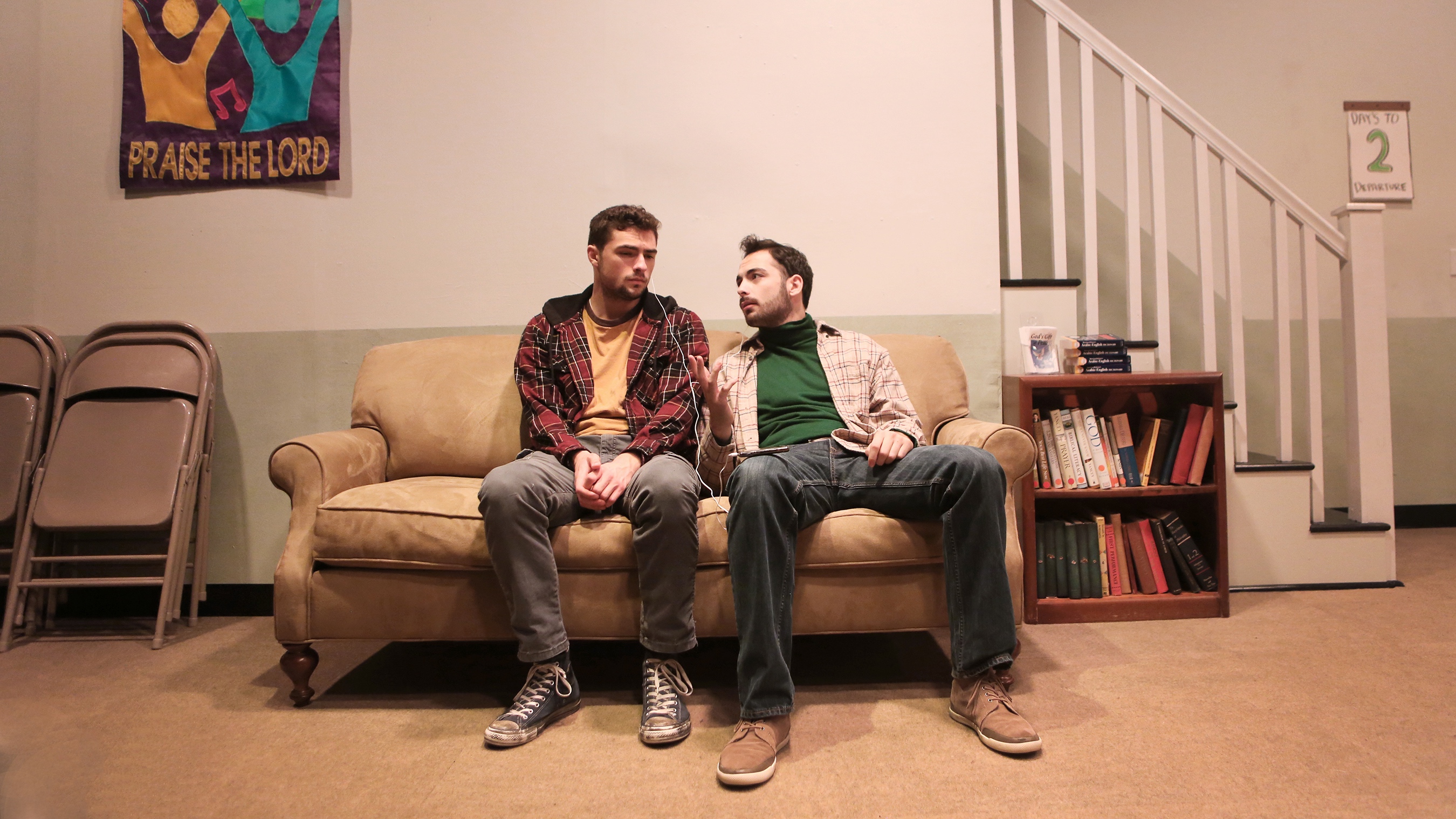
Photo by Sue Kessler.
Throughout my experience of The Harvest, I could not keep my mind from seeking more. I wanted to know the characters, to be a part of their space. I do not know if I would want to be friends with any of them, but the production made me want to understand them as people, rather than just representative archetypes of Evangelical Christianity. Through a space that made me feel that I was inside a world I was not expecting to ever see on the Skidmore campus, I was able to get to know their community’s story. The production made me want more– not because it was lacking, but because it felt real enough that I was curious, concerned, and often surprised by their world and the individuals it contained.
Production Credits
Written by: Samuel D. Hunter
Directed by: John Michael DiResta
Scenic Design: Garett E. Wilson
Lighting Design: Jared Klein
Costumes: Patty Pawliczak
Sound Design: Jessie Hamilton ’20
Dramaturgy: Eliza Kuperschmid ’21
Assistant Direction: Hannah Gross ’21, Ellie Strayer ’20
Hair: Esther Hibbs ’19
Stage Managed by: Eve Gertzman ’20
Cast: Audrey Erickson ’20, Spencer Evett ’21, Nick Leonard ’20, Liliana Mastroianni ’22, Juli Moreira ’23, Caoilin O’Connor ’20, Julian Tushabe ’22
Offstage Choir: Marcus Crevelt ’22, Michael Campbell ’22, Finn Hogan ’23, Emma Jaegar ’23, Nick Leonard ’20
Crew: Jared Klein (Technical Director), Dennis Strainge (Assistant Technical Director), August Sylvester ’20 (Assistant Technical Director), Jess Thomas (Charge Artist), Patrick Carter ’22 (Assistant Stage Manager), Lindsay Schafer ’23 (Assistant Stage Manager), Jessie Blackman ’20 (Props Master), Cameron Jabs ’21 (Props Master), Ella Long ’20 (Wardrobe Supervisor), Shelby Fairchild ’21 (Master Electrician), Michael Campbell ’22 (Light Board Operator), Emma Jaeger ’23 (Sound Board Operator)
Photo Gallery
***
Esther Hibbs ’19 is a staff writer for the Skidmore Theater Living Newsletter.
















